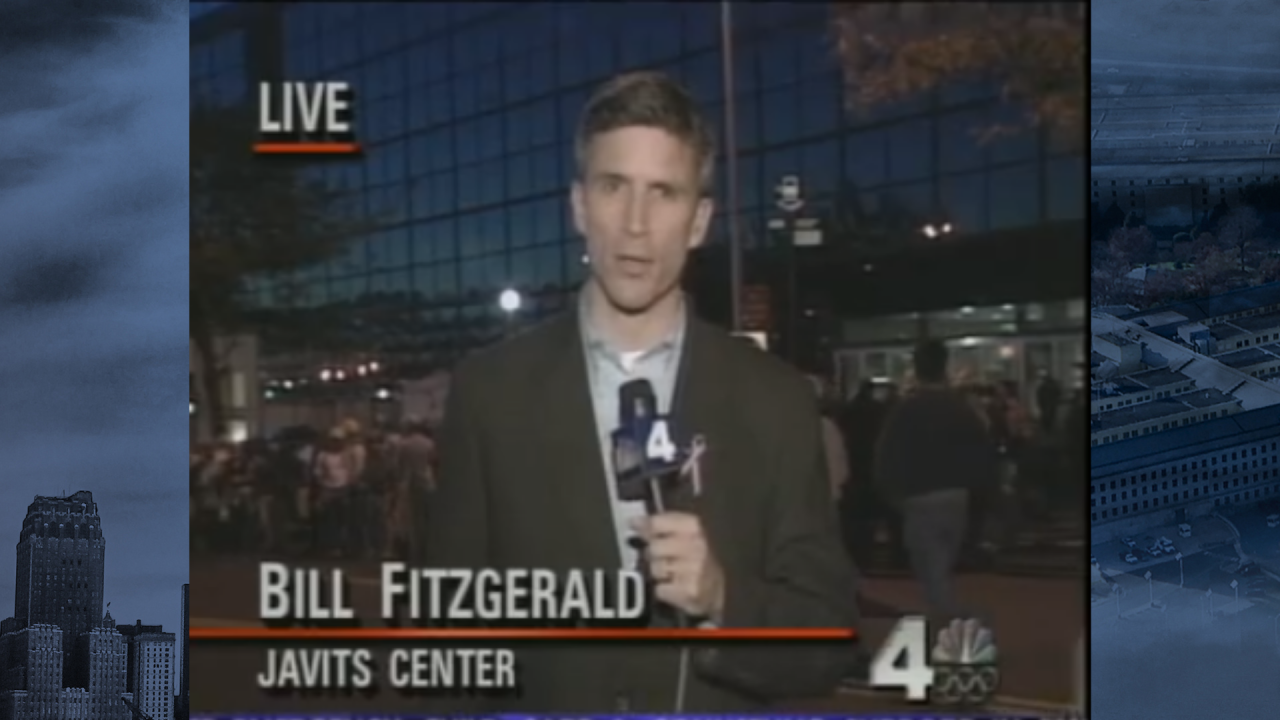I left New York City two years before 9/11 to take a reporting job with the NBC station in Birmingham, Alabama.
But the city I came back to as a reporter on loan to the New York NBC station two days after the attacks was shockingly different than the one I called home for more than a dozen years.

I think it was because of the scale of the catastrophe; there was no sense of an end to the trauma, no way to grasp the staggering personal and civic loss and there was no escape in the city itself. Even a week later, people miles away from the World Trade Center still moved silently, or with hushed whispers. Grief was city-wide: every fire station had lost firefighters so memorials sprang up in front of every firehouse.
You could be in midtown, six miles north of Ground Zero, turn a corner, and a gallery of pictures, candles, and mementos would suddenly be at your feet. Six men who worked there were gone.
The area downtown smelled terrible, and sounded even worse: the normal city noises were gone, even though emergency crews, construction crews, thousands of people were at work trying to rescue, or recover, whomever they could. So while there was plenty of activity, the city had basically stopped. And that created a dissonance that was upsetting.
Most heartbreaking were the pictures. It’s impossible to comprehend what you’re seeing when 5,000 different faces are staring at you everywhere you look. (In those initial days, it was unclear just how many may have perished in those buildings.) The photocopied pictures all over the city of the thousands of missing were a constant reminder of what was lost that day, together creating a kind of urban wallpaper, soundless glimpses of people in moments of joy, who were now lost somewhere, with families desperate for answers. Images plastered on walls, signposts, parked cars, store windows. Have you seen Melissa?
In my ten days reporting there, I spent most of my time at the Family Assistance Center (FAC), a sprawling facility set up inside one of the cavernous warehouses on the docks along the West Side. If you’ve been to the U.S.S. Intrepid Museum, you were about ten blocks south of the FAC. Initially, families looking for loved ones went to the Armory on Lexington and 25th St. But that was too small, so it was moved by the weekend to the West Side at 54th street.
Every day hundreds, thousands (?) of people would line up, to go inside, to fill out paperwork about their loved ones, to give a DNA sample from a hairbrush, a toothbrush. And they were pleading to have their loved ones’ stories told, so they could find out even the slightest whisper of a clue to their whereabouts. One that is seared into my memory was an interview with a man looking for his brother Joey. Joey worked in the South Tower and his traumatized younger brother wanted rescuers to know he had likely lost his glasses and couldn’t see in the dark, underground, and could they please work more quickly.
That was, I think, a week after the attacks, and several days after Mayor Giuliani had declared the work at Ground Zero a recovery effort.
Most jarring of all was seeing Meg. I guess I was bound to run into someone I knew but seeing her there, getting in line, to go through the Family Assistance Center, still haunts me. When I’m working I’m not used to being pulled into the personal. This can’t mean what I think it means. Meg was looking for information about her husband Tom. He worked at Sandler O’Neil, high up in the South Tower. Meg had called him after the North Tower was hit – in that 18-minute span- and he reassured her, that whatever happened was not in his building. She told me she pleaded with him to leave anyway. Their boys were three and one.
One of the services available to families at the FAC was mental health/grief counseling. Every day I would talk to the Red Cross spokeswoman, a young, thoughtful, and extremely bright light on some very dark days, about how many people had come through, what people needed, how grief on such a colossal scale could be managed.
On my last night there, I had finished my story for the 11 p.m. news somewhat early and had time to prepare for a live shot, when she came up to me. “And how are you faring?” she asked. “You’re hearing the same stories that we’re hearing inside the Assistance Center. How are you handling it?”
She had put her hand on my shoulder, and in that sudden, unexpected connection, I could feel my eyes welling, a lump in my throat. All I could think was, “Ma’am, I’m flying home to my wife and two toddler children tomorrow. I just need to hang on through the end of the 11 pm show.”
“I’m fine,” I said. “Just wish we could do more.”



